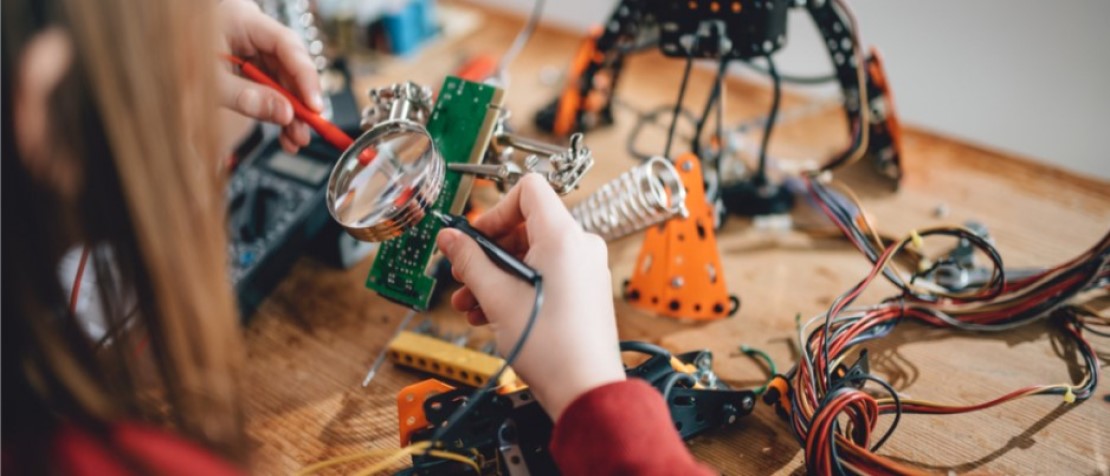
As the leader of a key technology team at the United Nations Office for Project Services (UNOPS), I belong proudly to the group of women globally who hold some form of tech industry job.
My job involves leading an UNOPS team of cloud computing and other information technology experts in the UNGSC Infrastructure Operations Section, providing vital support services to UN Headquarters and various UN agencies, peacekeeping missions, funds, and programmes.
To help my organization to reach gender parity, I try to find skilled women with the right information and communication technology (ICT) capabilities every time an opportunity to grow our team arises.
UN Secretary-General António Guterres has called gender parity across the United Nations an urgent need, a moral duty, and even an operational necessity.
But it also happens to be a huge challenge. On my team of 25 people, only 3 of us are women.
Unfortunately, I can’t say that I am surprised by this, given the slim ratio of women in the ICT world overall.
I started learning how to code when I was 8 years old. Back then, all my “coding friends” were boys. Then I began university, where I was one of 5 women among the 40 students in my computer science class. When I started my professional life, my environment became even more male dominated. Soon, I got used to being the only woman in the room.
Bringing more women and girls into ICT might seem like a tall order – but the need to change this situation has never been more urgent.
Girls and women are needed at the table to solve the greatest challenges of the present age.
Why change is necessary
Humanity today faces massive challenges, from the current COVID-19 pandemic to the mounting threat of climate change.
ICT innovations from artificial intelligence to blockchain could provide crucial solutions. But as long as these technologies are designed predominately by men, they will continue to reflect less diverse thinking.
Diversity can be a tremendous asset to any organization.
By enriching discussions with fresh perspectives, more and brighter ideas can be conceived.
At my former company, I was involved in an LGBTQ+ and allies group, whose main mission was to educate the company and the surrounding community about LGBTQ+ issues, to network with each other for support and to ensure a safe workplace, ultimately contributing to the company’s success by identifying and retaining top diverse talent.

Melina and members of the Oracle Pride Employee Network (OPEN). Image credit: Melina Lempert Acosta
Women see the world from a different angle. Our brains differ anatomically from those of men. Consequently, from our side of the gender spectrum, we can offer distinct, original approaches to problems.
The UN Secretary-General has also noted how “the meaningful inclusion of women in decision-making increases effectiveness and productivity, brings new perspectives and solutions to the table, unlocks greater resources and strengthens efforts across all the three pillars of our work. “
So, let’s put some action behind our intentions and recognize gender equality as one key source for more diverse decision-making. As Emma Watson, a goodwill ambassador for UN Women, said several years ago:
“It is time that we all perceive gender on a spectrum, not as two opposing sets of ideals.”
Here’s how we can do it
By the age of 6, many girls already consider boys to be better-suited than their own gender to “really, really smart” activities. We need to start changing this bias by introducing girls to science, technology, engineering, and mathematics (STEM) education at much earlier ages than we do now involving girls during high school activities.
Changing the basic mindset of young girls will require lots of work, but we can start, quite literally, with baby steps.
Secondly, girls need exposure to role models in STEM and ICT jobs. After all, you cannot be what you cannot see, as the saying goes. Encouragingly, we have seen major advances recently with women taking on prominent roles in Mars missions and COVID-19 vaccine development.
Finally, as anyone working in STEM knows, experience teaches us how to learn and adapt to new conditions. If the past year has taught us anything, it is that we need to strengthen our skills and resilience – not only as women, but as an inclusive human family.
Source: ITU
 Welcome to the United Nations
Welcome to the United Nations